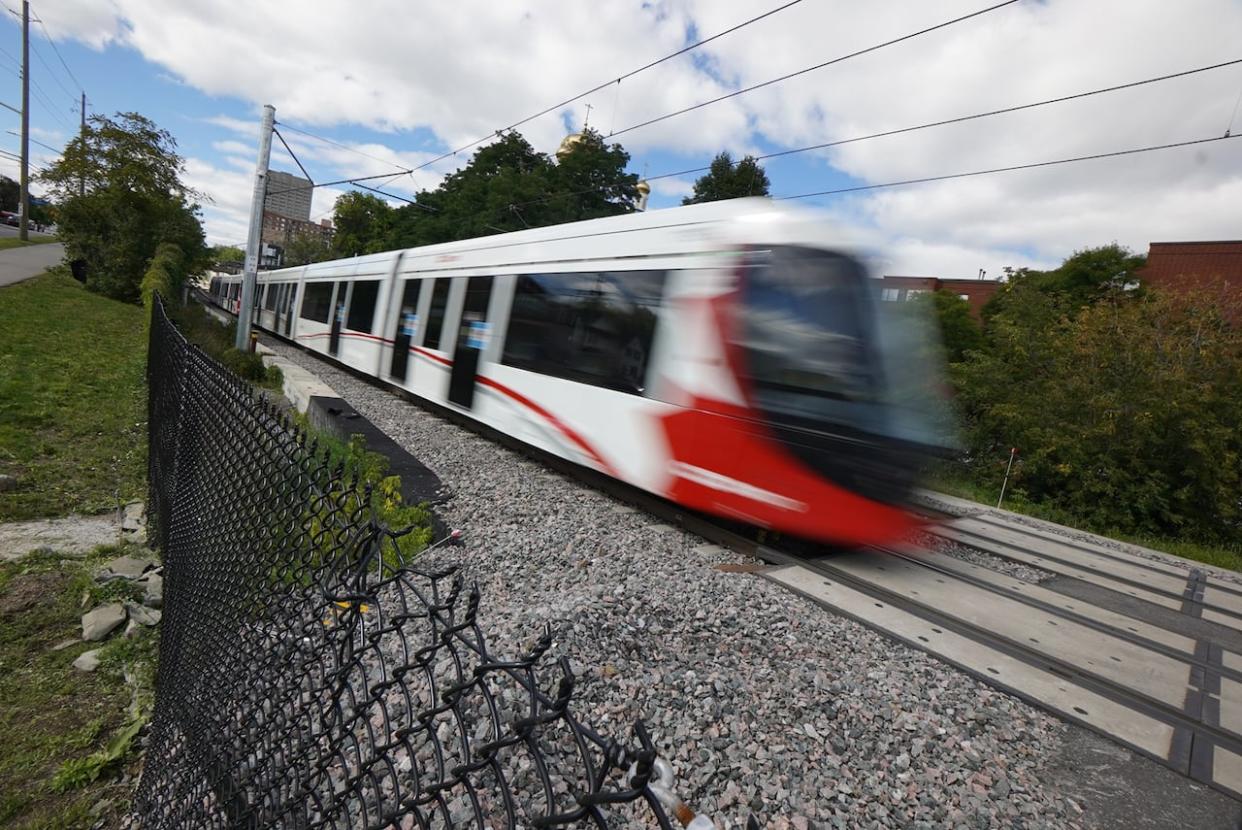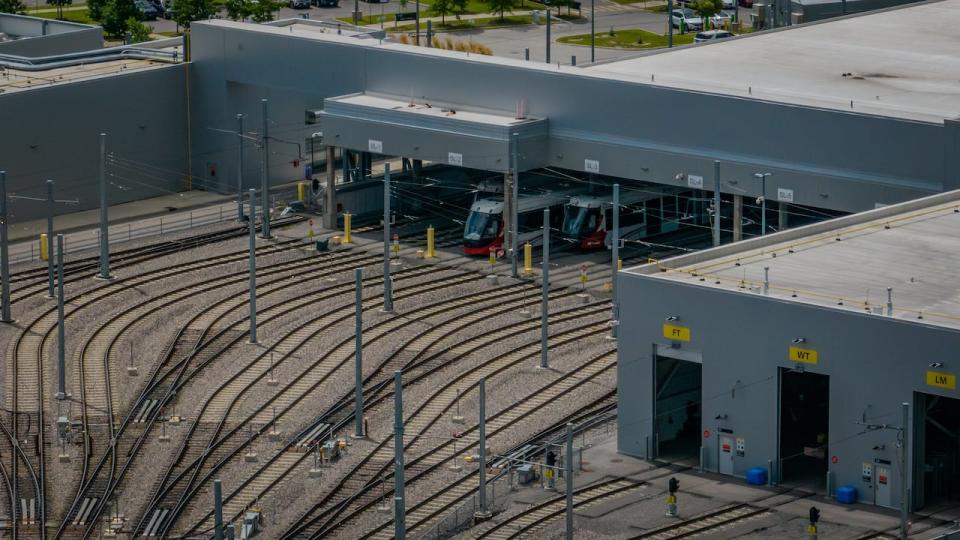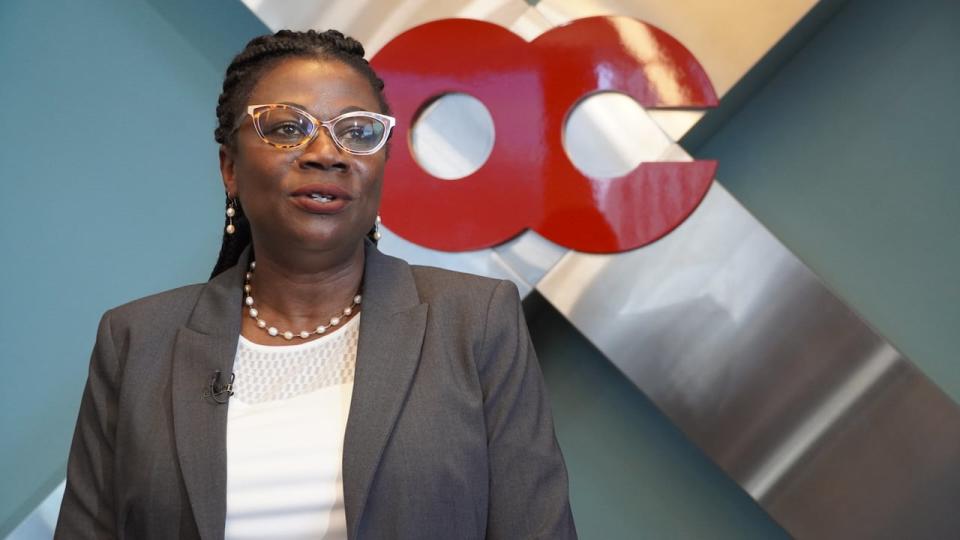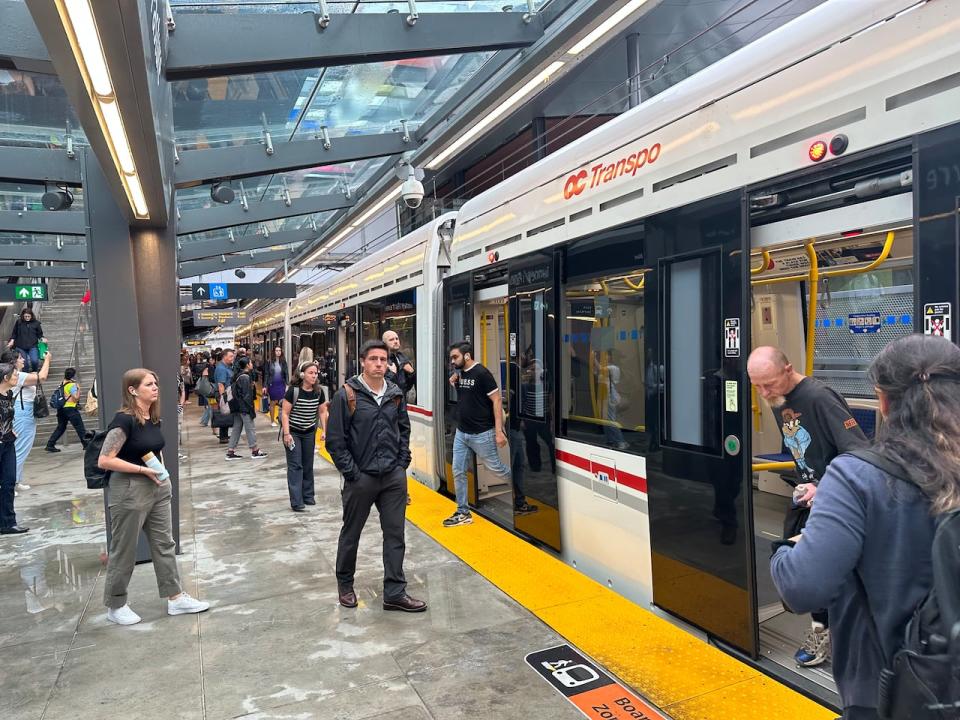As LRT turns 4, here's what was promised vs. what we got

On a cloudy September day in 2019, as Ottawa's new LRT prepared to open for public service, then-mayor Jim Watson had his eye on posterity.
"No one really knows how history will judge this day or how it will be recounted, but I'm sure that in 50 or 100 years from now, residents and transit users alike will be grateful," he said.
How riders will be reacting in 2119 is still anyone's guess — but nearly four years after Watson's pronouncement, there's already plenty of judgment from today's transit users.
Weeks after the recent 21-day full shutdown, and just as commuters return to work or school after the summer lull, the system is still operating with single-car trains running at reduced speeds.
Passengers will find an LRT that bears little resemblance to the "world-class transit system" politicians promised that day.
Here are some numbers to help make sense of the gap.
Available cars
Under the project agreement, OC Transpo was supposed to have 34 Citadis Spirit light rail vehicles, enough to run 15 double-car trains while keeping four cars back as spares.
Contractors struggled to deliver that many on time and in the ensuing years, OC Transpo has gone through periods where it's had fewer cars ready for service.
That was true in 2020, when a dearth of trains slowed down arrival frequencies.
It was true in 2022, when staff reported in September that 11 vehicles were unavailable for various reasons including inspections, axle replacements and a window leak.
Two were also unavailable on a long-term basis due to derailments the previous year.
The same report showed there were fewer than 15 trains running for stretches in five different months last year.
According to the city, there are currently 33 light rail vehicles available for service, subject to daily maintenance and inspection requirements — enough, in theory, to run 15-double car trains with three cars in reserve.
Capacity
OC Transpo is confident it can handle post-Labour Day crowds with just 13 single-car trains.
Ridership remains well below pre-pandemic levels and the city's general manager of transit services Renée Amilcar is keeping extra trains back to avoid wear and tear following the summer shutdown.
She said last week she can boost capacity if demand warrants, potentially by increasing the number of single-car trains to 15 during afternoon rush hour or by adding a second car to a couple of trains.
But 13 trains remains the plan.
"Based on the ridership that is there, we don't anticipate any risks," she said, adding that OC Transpo "will monitor [things] very, very closely."

Ottawa light rail trains peek out of an OC Transpo maintenance garage Aug. 1, 2023. This photo was taken using a drone. (Michel Aspirot/CBC)
But regardless of whether 13 or 15 cars hit the rails this week, they won't be able to carry the passenger numbers signalled in 2019.
On launch day, former minister of transportation Caroline Mulroney said the Confederation Line was expected to carry up to 10,700 passengers an hour during weekday peak periods, making it "the busiest light rail transit line system in North America."
Similar numbers appear in reports going all the way back to 2009. OC Transpo still has the 10,700 number on its website as the line's capacity.
The estimate is based on how many people the Citadis vehicles can hold. Each double-car train can fit 600 people both standing and sitting. The estimate assumes 15 of those trains visiting stations every three minutes and 20 seconds.
OC Transpo isn't coming close to that.
Instead, those 13 single-car trains running at current speeds are arriving roughly every four minutes and 30 seconds. They can carry about 3,900 passengers per hour in each direction, while 15 single-car trains would come every four minutes and carry 4,500.
Those numbers come from the city's director of transit customer systems and planning Pat Scrimgeour, though he said in an email that OC Transpo is able to scale up if ridership warrants.

Even with only 13 single-car trains running, OC Transpo general manager Renée Amilcar says the Confederation Line should be able to handle September ridership numbers. (Jacques Corriveau/CBC)
Speed
As initially planned, the LRT was expected to take fewer than 25 minutes to travel from one end of the 12.5-km track to the other. The OC Transpo travel planner now estimates that same trip at 28 minutes.
Speeds were reduced following derailments. The speed on straightaways is 80 km/h, but there are restrictions that impose slower speeds on approaches to stations and curves, with limits varying between 25 km/h and 45 km/h.
Those operational adjustments "ensure safe train operations" while adding about five minutes to the time it takes to get from one end to the other, said Troy Charter, the city's director of transit service delivery and rail operations.
In an information session during the last shutdown, Amilcar said speeds were reduced because OC Transpo didn't know what was causing wear on wheel bearings, a recurrent issue blamed for a 2021 derailment.
Once a long-term solution is in place, trains should speed up, she said. Restraining rails that put pressure on the bearings have already been moved, and Alstom is currently redesigning the wheel-hub assemblies.
"That will bring us back to the original plan," Amilcar said.
Ridership
In the 2012 business plan, OC Transpo counted on the new LRT line boosting ridership by four per cent in 2018, 5.4 per cent in 2019 and about three per cent each year thereafter.
The system has had little chance to prove that claim.
It opened so far behind schedule that it had no impact on 2018 and little on 2019. That left it with only a few months of operations before COVID-19 shut down the economy and public health measures kept riders at home.
In 2018, riders made 95.5 million bus trips. That ticked up slightly to a combined 97.4 million bus and train trips in 2019, with the Confederation Line running for the last three and a half months of the year.
Ridership plunged to 40.5 million in 2020 in the depths of the pandemic, falling further to 31.7 million in 2021 before rebounding to 50.2 million in 2022.
Recent months have shown further recovery, with May ridership at roughly two-thirds of pre-pandemic levels.
It's difficult to disentangle the effects of shutdowns, public disaffection with the system and the public health emergency, but clearly those trends were partly outside of OC Transpo's control.
Still, the LRT hasn't fulfilled its promise of reducing automobile dependence by drawing people toward public transit. Even as remote working shrinks the size of the pie, car usage remains by far the largest piece.
The 2016 census put the private vehicle as the main mode of commuting for 68 per cent of Ottawa residents, with public transport far behind at 21 per cent.
In 2021, transit's share had dropped to just 11 per cent, while cars had increased their dominance to 77 per cent.

Passengers wait to board an LRT train at Tunney's Pasture station on Aug. 8, the day service resumed after a 21-day shutdown. (Natalia Goodwin/CBC)
Reliability
Watson and Mulroney promised a reliable system in 2019, but according to city data, disruptions have prompted OC Transpo to suspend service over the entire line on 86 days since it opened.
Parts of the line have been out of service on still more days.
Shutdowns have been variously blamed on computer-based train control issues, derailments, freezing rain, the derecho and, most recently, grease on an axle that highlighted another bearing issue.
The system has nonetheless managed stretches of good performance, with reliability — measured as the percentage of successful trips — reaching 99.7 per cent in some months.
Problems such as lighting strikes and freezing rain drove that as far down as 91.2 per cent in July 2022 and 88.7 per cent in January of this year.
Though July and August figures haven't been shared with the city's transit commission, they will inevitably be far lower than that, given the summer shutdown.
Construction progress
Work toward Stage 2 of the LRT is far behind schedules first floated by the system's architects.
In 2013, Watson said lines east to Orléans and west to Moodie and Algonquin college would be ready this year.
Even in 2019, after months of delay were already baked into the project, the estimates remained far rosier than anything even remotely realistic today.
The east extension is currently forecast to open in early 2025. The west extension is 17 months behind and isn't expected to open until well into 2026.
The Trillium Line rail project is also behind schedule, with signal testing partly to blame.


